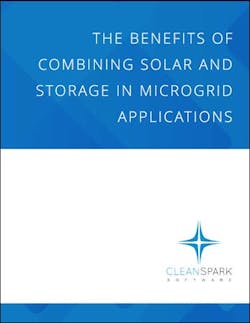Renewable energy has evolved and expanded significantly over the last two decades into a force in both the environment and the economy, but such gains have not been without its fair share of growing pains. Despite exponential growth, the solar energy and solar and storage market is now faced with a new set of challenges.
Energy storage can be a valuable addition to a renewable energy developer’s toolkit and provide significant value to end consumers, utilities, and everyone in between.
Most notably, solar-only installations have seen a decline in ROI as utility companies shift their peak rate schedules to when solar generation is tailing off for the day. The good news is that a multifaceted, functional solution exists for this and other issues across the renewable ecosystem. With cutting-edge technology, solar and advanced energy storage can be combined within a network of intelligent controls to provide reliable, affordable, and optimized power to energy consumers.
Today’s microgrid applications are both flexible and adaptive, enabling the end user’s energy systems to generate a marked improved return on investment. To truly grasp the importance of this innovation, a new paper from CleanSpark examines how the renewable landscape has evolved and the leading role microgrid technology plays in the future of energy — and explores the benefits of combining solar and storage in microgrid applications.
